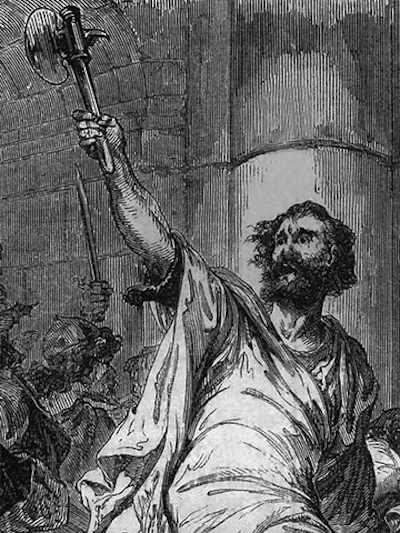A Big Score, But New Tactics
Episode #5 of the course Vikings: History and mindset by Tom Shippey
Welcome to Lesson 5!
Today, you’ll learn how the Vikings moved down south and how they tried to confront King Alfred again.
What Next?
Elderly Vikings must have remembered the era of Ragnar and Ivar, roughly 845-875, as a happy time. Ireland was a going concern, England was dominated, apart from young Alfred. Vikings had also done very well in France, raiding up the rivers, hitting one church or monastery after another.
But there was a problem. Church valuables, built up over centuries, were a non-renewable resource. You could go back again and again for slaves, yes, but then you had to find buyers with cash. North-west Europe had no gold or silver mines, and nothing much to export.
The money was down south, in the Muslim world. Eyes began to turn that way.
Hastein, the Vikings’ Viking
The interesting character here is a man called (probably) Hastein. He had done well in France but wanted more. He must have heard about the attack on Seville in southern Spain in 845 that had had heavy losses—the Emir Abd al-Rahman of Córdoba sent 200 Viking heads to Tangier in north Africa—but losses were part of the job.

Hastein in Luna, Italy ca 859.
Between 859 and 861 (Arab sources are good on dates), he and his partner, Bjorn Ironside, made a long cruise to the south. They hit Algeciras, near Gibraltar, went on to the Balearic islands, made a base in southern France, and went on to Italy—aiming at Rome, it’s said, but they got the wrong city.
On their way back, they got the big payoff. They captured the governor of Christian Pamplona in northern Spain and ransomed him for 90,000 gold dinars, nearly half a ton of gold! Valuing that is hard to calculate, but it was a lot more than Ragnar’s payoff in 845 for Paris.
Hastein went back and took over the city of Chartres in France but was eventually chased out. The Norman chroniclers said he then disappeared. But actually, he hadn’t. He had crossed the Channel to try his luck against Alfred. Another Viking army crossed at the same time.
The Alfred Strategy
Alfred, however, had had ten years of peace to make preparations, and he had figured out how to beat Vikings. His strategy was based on forts, reliefs, and bottling up. What he did was garrison walled towns; keep an army in the field, arranging regular reliefs; and make life hell for foragers.
Foraging for supplies is best done in small groups, so the defenders should also spread out and ambush them. As The Anglo-Saxon Chronicle says, Viking gangs went through the forests of Kent, but they were stalked day and night by detachments from the garrisons and the field army. Similar to the Battle of Britain of the Second World War more than a thousand years later, but these were dogfights on the ground, not in the sky.
It was the other Viking army that bore the brunt of this because Hastein had made a deal with Alfred. He broke it, but the Anglo-Saxons stormed his fort at Benfleet in Essex. Hastein got away, but Alfred’s army chased the surviving Vikings all the way across England, besieged them, used scorched earth tactics to starve them out, and killed everyone they could catch. The Vikings still managed to break out, but Alfred had made raiding unprofitable.
Did he consider paying them to go away? The Chronicle won’t admit it, but it does let slip that the deal with Hastein involved him having his sons baptized with a sweetener disguised as baptismal presents. It was breaking this deal that really annoyed the chronicler.
Set a Thief to Catch a Thief
Another of Hastein’s partners was making a different deal. In 911, Ganger-Hrolf (he was too big to ride a horse and had to “gang” on foot) accepted a land grant in Normandy from King Charles the Simple in return for keeping other Vikings off.
The Franks wanted him to kiss the king’s foot, but Hrolf (the Rollo of the Vikings TV series) told one of his men to do it. He did, but he wouldn’t kneel—he grabbed the king’s foot and threw him flat on his back. Just like the “wildlings” in Game of Thrones.
That’s what Vikings were getting into. First loot, then land, then thrones.
Tomorrow, we’ll talk about the power of Viking poetry.
Recommended reading
Recommended book
The Vikings: Wolves of War by Martin Arnold
Share with friends
